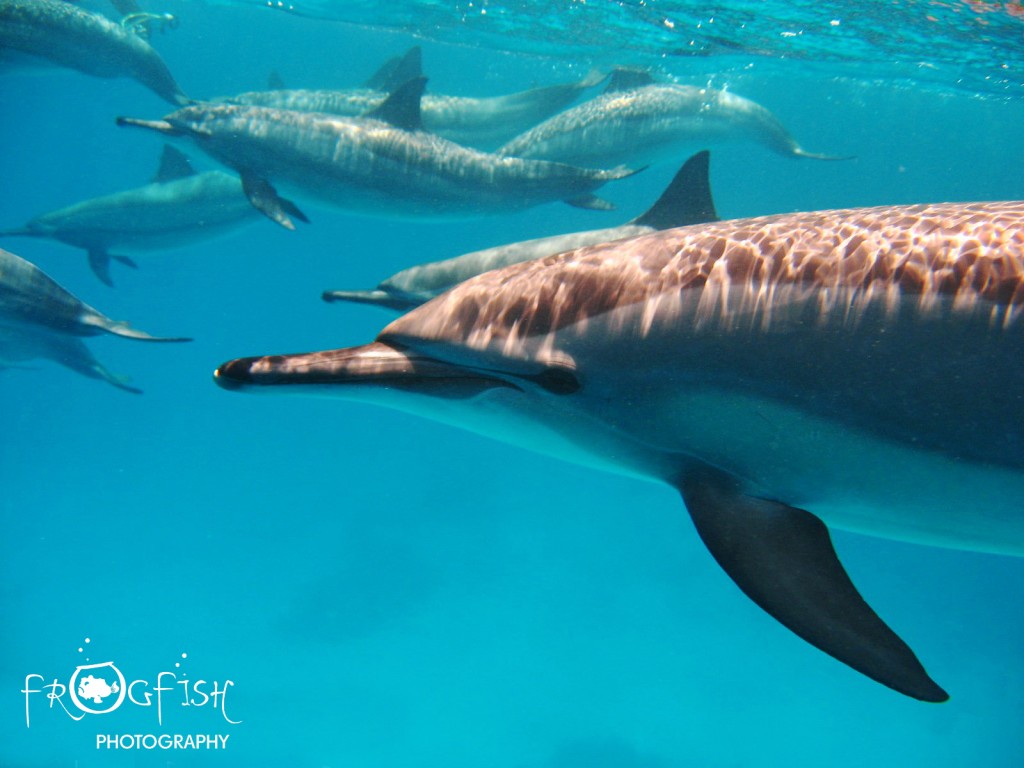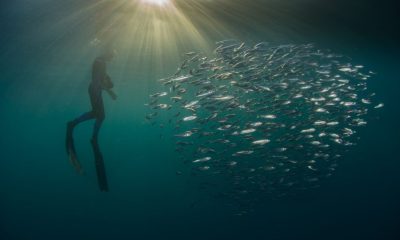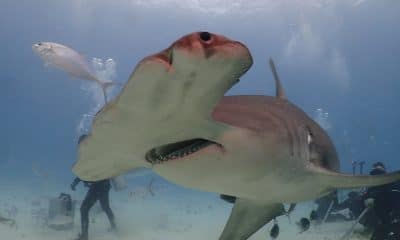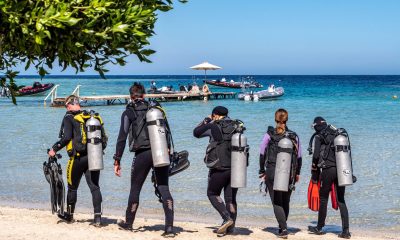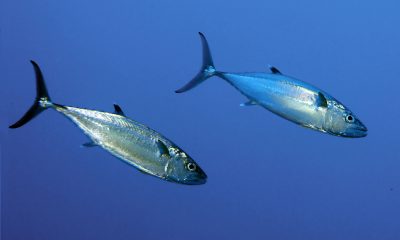News
Whale Sanctuary Project to Create Seaside Sanctuary for Whales and Dolphins

WASHINGTON, DC – It’s the dawn of a new era for whales and dolphins retired by entertainment facilities or unlikely to thrive in the wild, thanks to a new, independent organization with plans to establish a model seaside sanctuary.
Launched this month with generous support from Munchkin, Inc., The Whale Sanctuary Project is creating a seaside sanctuary where cetaceans – whales, dolphins, and porpoises – can live permanently in an environment as close to their natural habitat as possible and with full support for their well-being.
Whales and dolphins are highly intelligent animals who have complex social lives, and public opinion is increasingly opposed to keeping them captive in concrete tanks. The new non-profit fields a team of experts in marine mammal science and behavior, veterinary medicine, husbandry, engineering, law and policy, to lay the groundwork for the creation of permanent cetacean sanctuaries. This all-star team is tasked with producing a viable plan for construction and management of a North American sanctuary, and to select the most suitable location to ensure a better future for captive cetaceans.
The new non-profit organization is headed by Dr. Lori Marino, executive director of The Kimmela Center for Animal Advocacy, Dr. Naomi Rose, marine mammal scientist for the Animal Welfare Institute, and David Phillips, co-founder and executive director of Earth Island Institute and director of the International Marine Mammal Project.
“There are sanctuaries for other large, highly social, and wide-ranging mammals, including elephants and great apes, but there are none anywhere in the world yet for dolphins and whales,” said Marino, a neuroscientist and expert in animal behavior and cognition formerly on the faculty of Emory University. “Cetacean sanctuary initiatives are long overdue, and we now have the best possible team of experts to ensure an optimal quality of life and care for individual cetaceans.”
The planned sanctuary will primarily serve orcas, belugas and dolphins endemic to colder waters who are retired from entertainment facilities, and injured or ill animals rescued from the ocean. Rescued animals may be rehabilitated and returned to the wild, but those retired from the entertainment industry, who have never known life in the wild, are considered unlikely candidates for release and so would be given lifetime care. The sanctuary would be open to the public on a regularly scheduled basis, in a manner that avoids disturbing the animals, and would offer comprehensive conservation and education programs.
The Whale Sanctuary Project has received an initial donation of $200,000 from Munchkin, Inc., an award-winning, global baby product company. Munchkin, Inc. previously launched its “Orcas Live in Oceans” campaign to raise awareness of the plight of captive whales, and removed the orca toy from its popular bath toy collection. The company has also pledged a total of at least $1 million toward completion of the project.
“Munchkin has long favored a natural coastal ocean sanctuary as an alternative solution to maintaining orcas in captivity, so we are eager to support The Whale Sanctuary Project’s efforts on behalf of cetaceans retired from the entertainment industry,” said Steven Dunn, CEO and founder of Munchkin. “We are dedicated not only to these majestic mammals, but also to helping parents and children understand what they can do to help orcas and others live the rest of their lives happily and safely.”
Funds from Munchkin will be used for an extensive site search, which involves studying the unique geographic, oceanographic and anthropogenic conditions of a number of possible coastal locations, and a strategic plan for building and operating the sanctuary as well as transport and care of the first animals.
Staff, board members and advisors of The Whale Sanctuary Project represent some of the world’s most experienced scientists, clinicians, engineers, attorneys, business experts, and marine animal advocates. They include biologists, wildlife veterinarians, zoologists, university researchers and former trainers from marine animal parks.
For more information, visit www.whalesanctuaryproject.org.
News
Book Review: Fire on Monroe Bravo by Fred Lockwood

Fire on Monroe Bravo is the latest book in the Jack Collier series by Fred Lockwood. Our story begins with our lead characters, Jack and Sandro, owners of Marine Salvage & Investigation Company, arriving on the Monroe Bravo Oil & Gas Platform in the North Sea. Having secured a contract for their vessel the MV Stavanger to act as support ship to the platform for TransGlobal Oil, our protagonists are on a celebratory visit.
However almost as soon as they arrive a series of explosions rock the platform, causing huge damage, loss of life and the very real danger of a massive human, ecological and financial disaster.

As the danger mounts for both our heroes and the surviving workers, Jack and Sandro will have to escape the inferno, all while trying to save the platform and the men still trapped unable to help themselves.
The disaster sets the scene for the unfolding story lines following the fate of the platform and our main characters, the police investigation into a suspected terrorist act and the actions of TransGlobal Oil as they attempt to navigate the pubic outcry and financial repercussions.
In his eighth book, Fire on Monroe Bravo, Fred Lockwood delivers an explosive thriller, with plenty of above and in-water drama, and our heroes fighting for survival, what more can you ask for?
We thoroughly recommend this read and look forward to the next in the series. For more information about his book series, you can check out the reviews of his previous books here on Scubaverse.
- Title: Fire On Monroe Bravo
- Author: Fred Lockwood
- ISBN: 979-8325324536
Available in a paperback version and for Kindle from Amazon and book stores.
Blogs
Alonissos: The complete diving destination (Part 1)

In June we were incredibly fortunate to be invited to dive in Alonissos, a small Greek Island in the Sporades island chain located in the North Aegean Sea. While I have long been a big fan of the Greek Islands as a great holiday destination, I had not had the opportunity to do any diving on previous visits and Mike and I were extremely excited to see what Alonissos had to offer both above and below the surface!

The Sporades are easily accessible via the airport in Skiathos (the first island in the chain), which is served by Jet2 flights from all major UK airports from May through October. Numerous ferries and charter boats make island hopping from Skiathos Town a breeze. After an hour boat ride, the picturesque port of Patitiri was a wonderful introduction to Alonissos, where we were met by our gracious hosts Kostas of Albedo Travel and Dias of Alonissos Triton Dive Center. Mike and I were delighted to be staying at the Paradise Hotel, aptly named for its stunning views over the sea and great location for walking to the waterfront.

Alonissos is beautifully situated in the National Marine Park of Alonissos and the Northern Sporades, the largest marine protected area in Europe. The surrounding seas offer fabulous marine life, including incredibly rare species such as the Mediterranean monk seal. They boast deep walls covered in gorgonians and sponges, stunning topography with caverns, swimthroughs and pinnacles, and the first accessible ancient shipwreck from 500BC!

In locations where historical sites have been reported, the waters are largely restricted, but with collaboration between government, underwater archeologists and dive centres, incredible underwater museums are being created for a truly unique diving experience. Alonissos is home to the first of these, the Ancient Shipwreck of Peristera Accessible Underwater Archeological Site. The chance to dive into history (along with reports of healthy reef life and amazing underwater topography) meant Mike and I were keen to get in the water.

Our introduction to the diving around Alonissos was at the Agios Georgios Pinnacles, in the channel between Alonissos and Skopelos. This fantastic site was named “The Chimney,’ and proved to have a huge amount to see. We got to a decent depth here (over 25m), and marvelled at a colourful reef wall with a wonderful swim through whose rocky walls were absolutely covered with life. As well as brilliant topography there was no shortage of macro life here. We saw numerous nudibranchs, five different species in total. The second dive at Mourtias reef nearby was a shallower dive along a nice wall with lots of crevices. Several moray eels and grouper called this site home. We enjoyed looking in the crevices for lobster and smaller benthic life, such as cup corals and tunicates.

Our itinerary allowed us two dives a day with afternoons left to explore the island with our hire car and evenings to enjoy the famous Greek hospitality. This proved to be a lovely mix of in-water and land based diversions.

The next days diving to the Gorgonian Gardens and Triton’s Cave was to be even better! These two stunning sites are nothing short of fabulous. The Gorgonian Gardens was a deep wall near to the Agios Georgios islands. The ever-present currents in this deep channel meant that the sea life was amazing … the namesake Gorgonian sea fans dotted the wall at a depth of 30 to 50 meters, getting ever larger the deeper we went. Above 30m was by no means less beautiful, with sponges, corals, scorpionfish, moray eels and some rare and colourful nudibranchs.

The second shallower dive of the day was to Triton’s Cave or the Cavern of Skopelos, on the east side of that island. The spectacular rock formations had wild striations both above and below the water making a truly epic topography. The cavern entrance was at 14m, and big enough for a buddy pair, winding up to 6m and passing two beautiful windows out into the blue. Emerging from the cavern, the light at the shallower depths and the incredible rock formations made for a fantastic gentle swimming safety stop and we all surfaced by the boat with massive grins.

Check out our next blog :Alonissos: The complete diving destination (Part 2)” to hear about our amazing dive on the 2500 year old Peristera Wreck!
Thanks to:
Alonissos Triton Dive Center https://bestdivingingreece.com/
Albedo Travel https://alonissosholidays.com/activities/
Paradise Hotel https://paradise-hotel.gr/
Alonissos Municipality https://alonissos.gr/en/
-

 Blogs2 months ago
Blogs2 months agoDiving With… Nico, Ocean Earth Travels, Indonesia
-

 News1 month ago
News1 month agoMurex Bangka Announce New Oceanfront Cottages & Beachfront Dining
-

 Blogs2 months ago
Blogs2 months agoA new idea in freediving from RAID
-

 Marine Life & Conservation1 month ago
Marine Life & Conservation1 month agoIceland issue millionaire whale hunter a licence to murder 128 vulnerable fin whales
-

 Marine Life & Conservation2 months ago
Marine Life & Conservation2 months agoThe Shark Trust Great Shark Snapshot is back
-
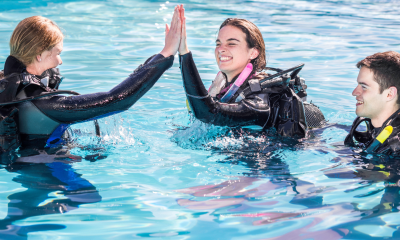
 News3 months ago
News3 months agoCharting New Waters; NovoScuba Goes Global with the Launch of their Revolutionary Dive Training Agency!
-

 Gear News1 month ago
Gear News1 month agoNew Suunto Ocean – a dive computer and GPS sports watch in one for adventures below and above the surface
-

 Marine Life & Conservation Blogs2 months ago
Marine Life & Conservation Blogs2 months agoBook Review: Plankton


